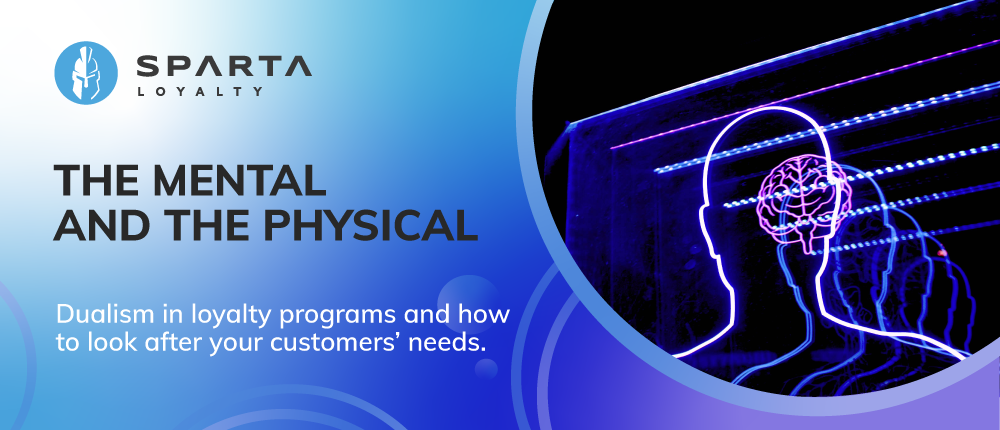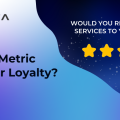The mental and the physical: Dualism in loyalty programs and how to look after your customers’ needs
Reading time: about 8 minutes

A new trend
As the world is set to begin its slow stride into recovery post the pandemic fiasco, it is very obvious to see that the needs and requirements of customers have rapidly shifted towards a more personalized and empathetic touch. The current market buzzword is customer experience which draws upon not only the way participants in loyalty programs view loyalty programs but the way in which companies are treating customers, particularly their expectations and desires.
It is clear to see that over a number of years many businesses who created loyalty programs used them as an acquisition strategy where customers were viewed as commodities that needed to be mined; rather than individuals with tensions to solve. This style of thinking is at the very core of failures in such programs as they struggle to truly address the fundamentals of building loyalty. These are of course brand trust, personalization, appreciation and more so having a reciprocal relationship with the company, brand, or business. Once again to reiterate, these all fall into that cheeky buzzword: Customer experience.Dualism in theory and practice
Buzzwords aside there has been a paradigm shift in the perception and the way in which companies act out their intentions towards their customer base. This change can be rationalized by the following argument:
By adopting a very basic conceptualization of cartesian dualism and adapting it to a method in which we can describe loyalty programs - or at least borrow a few ideas - we can create an axis where both the realms of mental and physical loyalty meet.
The emotional state of customers is very much separate from the physical interaction of loyalty program operation. What I mean by this is that for example, if we are to say that the mental realm is customer experience, then the physical realm is definitely the method in which the customer interacts with the program, they are then in fact, separate entities. Simply put, what is the emotional experience of the customer versus how can they utilize your loyalty program.
When two worlds collide
As customers in themselves are strident on having an omnichannel experience during challenging times, they are also looking to have a sense of exclusivity and appreciation for showing favor to your business. The intersectional point where both of these realms or realities meet is extremely important in the upcoming years as more and more companies are beginning to value their loyal customers and see the potential that loyalty programs bring.
So how is this union achieved? The answer, as all complicated things are, well, complicated.
Many factors need to be taken into consideration when trying to take in the requirements of the customer’s needs and align them with the financial goals of a company. This balancing act seldom is easy to achieve as there are numerous examples of companies over-investing in various technology, experience, and personalization modalities that hardly show any ROI. The inverse can be said the same as various companies fail to keep up with modern options, which leave their loyalty programs feeling antiquated and lackluster. Furthermore, it is important to consider that the initial success of a loyalty program shouldn’t only be measured by bottom-line returns. If you are able to use the tools you have and provide products and services where your customer feels valued and experiences trust in your brand, then conversion of opposing customers to your brand via word of mouth is of even more value than creating an entirely new one (which can cost up to 7x more than retaining/converting one).
“The complications that many businesses seem to have when trying to create or revamp a loyalty program is that they lose sight of who they are truly creating the program for and for what purpose” - Alexander Kubicki, Marketing Director at Sparta Loyalty - “Humans are complicated and in troubled times, they always seek familiarity and comfort, especially when they consider branding. The key to successful courtship between the experience of a customer and their participation in a loyalty program is to make it feel seamless and habitual, but also by reinforcing a consistent positive feedback loop.”
The tools of success
To truly achieve a connecting duality with your customers the following points need to be taken into consideration:
- Become enthralled with your customers. When it comes to creating loyalty with customers it is important to first rationalize their needs and requirements. The only direct way of achieving this is by directly talking to your customers and learning how they feel and behave towards your company. Loyalty programs are in principle, data mining machines, so direct analysis of the responses your customers have to your products, their patterns of shopping, and their reactions across other media mediums are also great indicators of your company's perception. These insights need to be harnessed. An example of this sort of behavior is exemplified by Starbucks and its ‘Starbucks Rewards’ program which launched its mobile application 10 years ago. Not only does the program live up to its expectations and set the benchmark for further competition, but the whole application is also made in service of gathering as much information and feedback about its customer base. The communication and feedback channels that Starbucks has been able to achieve are seamless as they have been able to create a very distinct and personalized experience with their customer base.
- Secondly, always put your best customers first. Give your most loyal customers plenty of reasons to stay with you and no reason to consider other options. This is paramount as your loyal customer base is at the forefront of your brand identity and fosters familiarity with your company, as long as they feel appreciated. The global cosmetic retailer, Sephora, and their ‘Beauty Insider’ community have put their mark on the map with this sort of consumer approach. Not only do they have a tiered loyalty program that rewards its most active members, but they also provide exclusive events, and birthday presents and in some circumstances (the US only) have free shipping.
- Thirdly, retain your company's principal mission as a priority and stick to what you achieve the most. If you play into the fallacy of being a jack of all trades, you’ll end up being a master of none to your customer base. The key takeaway here is that you must play to the strengths of your business and what your customers enjoy the most. There is no sense in trying to be like every other competitor as this will lead to the alienation of your most loyal customers. No more has this been exemplified by Jeff Bezos and Amazon’s principle mission for investing in customer convenience. Amazon Prime is the pillar of retail accessibility that has, at least in the modern world, change the very concept and nature of what online shopping means. This is also further facilitated as Amazon Prime being a subscription loyalty service, outlines directly their mission statement to its clients and always seeks to improve its services upon its customer’s investment.
- Fourthly, consistently find new ways for your company to make your customers' lives simpler and easier but also find ways in which to surprise them too. The act of creating unexpected, or even at times, extraordinary actions or offers can create a level of heightened emotion, which if handled with care, can translate directly into positive reinforcement. Instigating this type of behavior keeps your customers busy talking and potentially even bragging about your deeds. In fact, various sports fashion brands such as Nike, Adidas, and Puma have honed in this sort of behavior by rewarding their customers with invitations for exclusive events during moments such as birthdays or specific anniversaries. Even some brands offer discounts, coupons, and other benefit schemes to their customer base to reinforce positive behavior.
- Finally, create avenues that integrate your loyalty program into your customer's life. Different modalities now exist thanks to the ever-expanding technology, coupled with the accessibility of multiple platforms increases the efficacy and efficiency of your loyalty program. Many companies (the aforementioned Starbucks, Amazon, and even companies like Home Depot and Microsoft) now accept different payment methods such as cryptocurrencies which adds a new layer to technology integration.
In short, finding the synergistic balance between the mental and physical realm of your customers is the sure way to achieve success for your loyalty program not only in 2022 but in the future. By employing some of the points outlined, finding the balance between customer experience and utility will bring forth only continued loyalty.
- Author: Alexander Kubicki and Sparta Loyalty
- Entry Date: 6 07 2022





